Freedom Coast TRP Brake Levers
Blister’s Measured Weight: 47 g per pair (stock levers are 38 g)
MSRP: $119
Brakes Used: TRP DH-R Evo
Reviewer: 6’, 170 lbs / 183 cm, 77.1 kg
Test Locations: Washington, British Columbia
Test Duration: 7 months
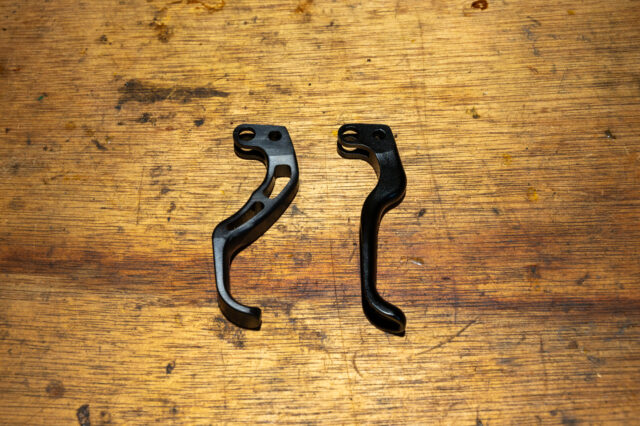
Intro
Aftermarket brake lever blades had a moment in the 2000s, with companies like Dangerboy and Twenty6 offering their respective takes on brightly anodized bling for the brakes of the day. That trend faded out for a while, but a few brands, including Freedom Coast, have started offering aftermarket lever blades again.
In the case of Freedom Coast’s TRP levers, the main point isn’t to add some color to your bike (though you can do that if you want) — it’s to reduce the reach on TRP’s Evo series brakes.
That reach is something that keeps coming up across the various TRP brakes we’ve tested because they all position the lever blade farther out from the handlebar than the vast majority of brakes on the market.
How you feel about that is going to be a matter of personal preference, of course — I’ve repeatedly stated that I’d prefer the levers closer to the bar but our reviewer Dylan Wood, for example, is fine with the adjustment range on the stock DH-R Evo. It’s not really a hand-size thing — I wear an XL or sometimes an XXL glove — but just a matter of how we like to set up our brakes.
But Freedom Coast clearly agreed with me and designed a replacement lever blade to bring in the reach on TRP’s Evo-series brakes. Given how much I otherwise like the DH-R Evo brakes, I was quite excited to give the Freedom Coast levers a go.
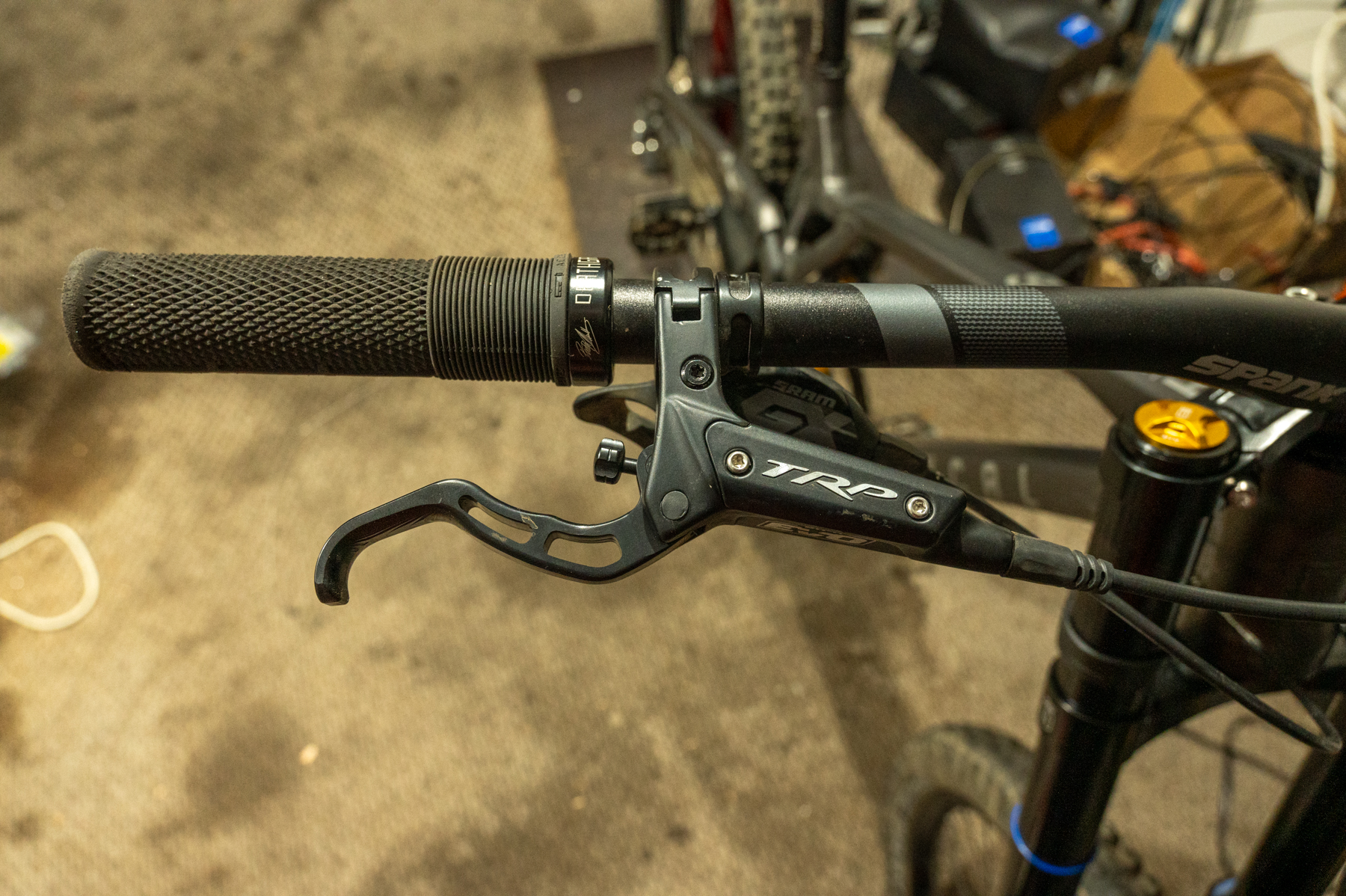
Design
The Freedom Coast levers are designed to keep a similar overall shape and feel to the stock TRP levers, apart from bringing the reach-adjustment range closer to the bar. Freedom Coast primarily markets them for the DH-R Evo brake, though they’re also compatible with the Trail Evo and Slate Evo / Slate T4, all of which use the same lever blade. Freedom Coast’s levers are machined in California and are offered in a bunch of different anodized colors.
To achieve the reduction in reach, the Freedom Coast levers take a much deeper jog inward than the stock TRP lever, so that the outer portion of the lever sits closer to the handlebar, by about 12 mm. The hook at the end of the lever is also deeper on the Freedom Coast version, but the shape and thickness of the lever blade feel largely similar otherwise.
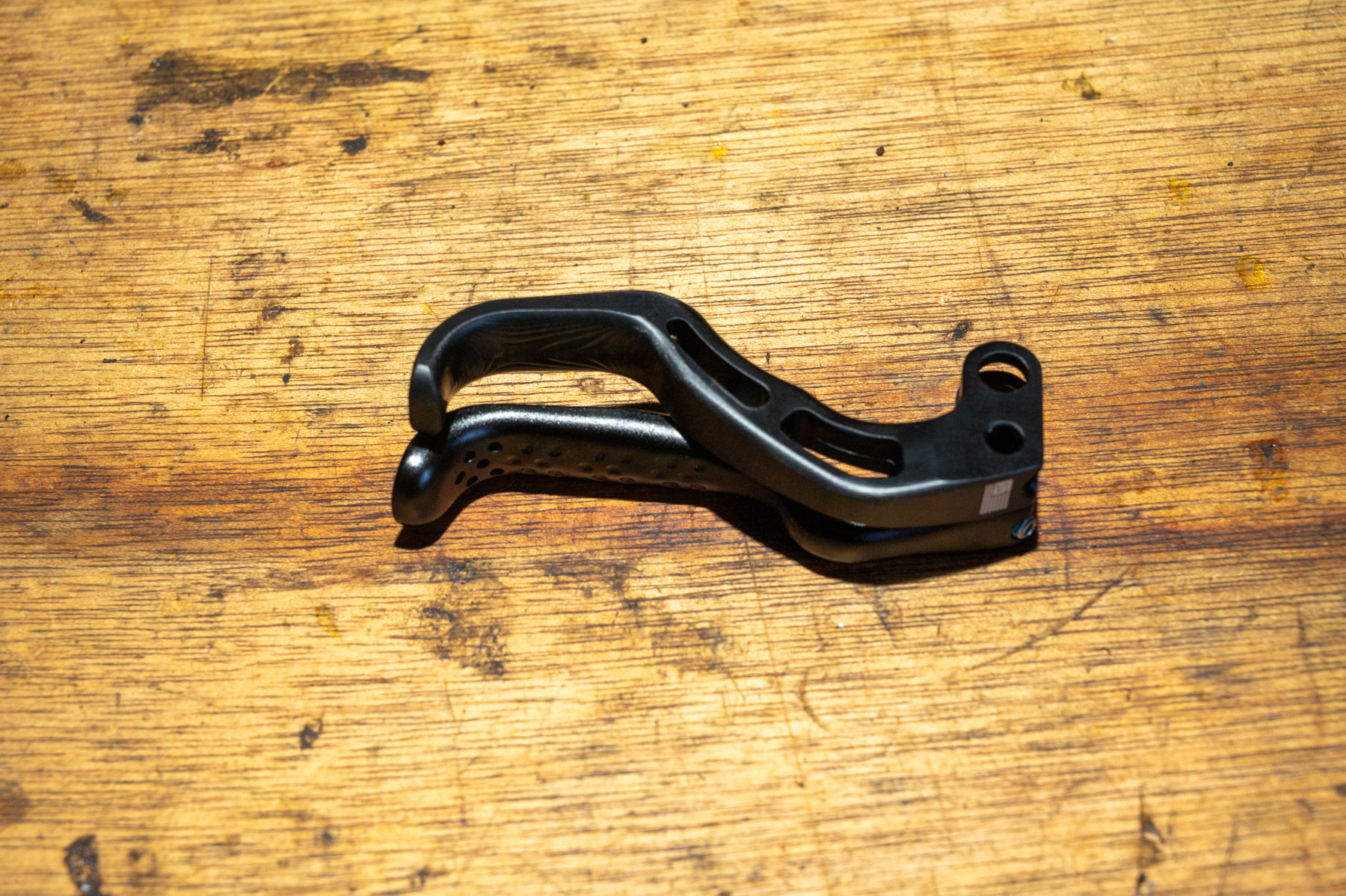
Installation
Installing the levers is quite straightforward. Freedom Coast has a video that shows the process quite well so I won’t go into too much detail, but the short version of the steps is as follows:
- Remove the reach-adjuster knob by loosening the set screw that holds it in place.
- Remove the set screw that holds the main lever pivot in place. Push the pin out of the lever body (it may take a gentle tap with a mallet) and make sure to keep track of the plastic tophat bushings that the lever pivots on.
- Screw the pushrod that the reach-adjustment knob was attached to all the way in until it slides free of its barrel nut. The stock lever will now come off.
- Do all those steps in reverse with the new lever to install it.
Pushing out the lever pin is the only part that’s even remotely tricky; you can either push it out using an Allen wrench or similar (as shown in the Freedom Coast video) or use a mallet and a punch to tap it out. I found it easiest to use a mallet, but it can be done without one. The process is very straightforward and should be no problem for most folks with a few basic tools.
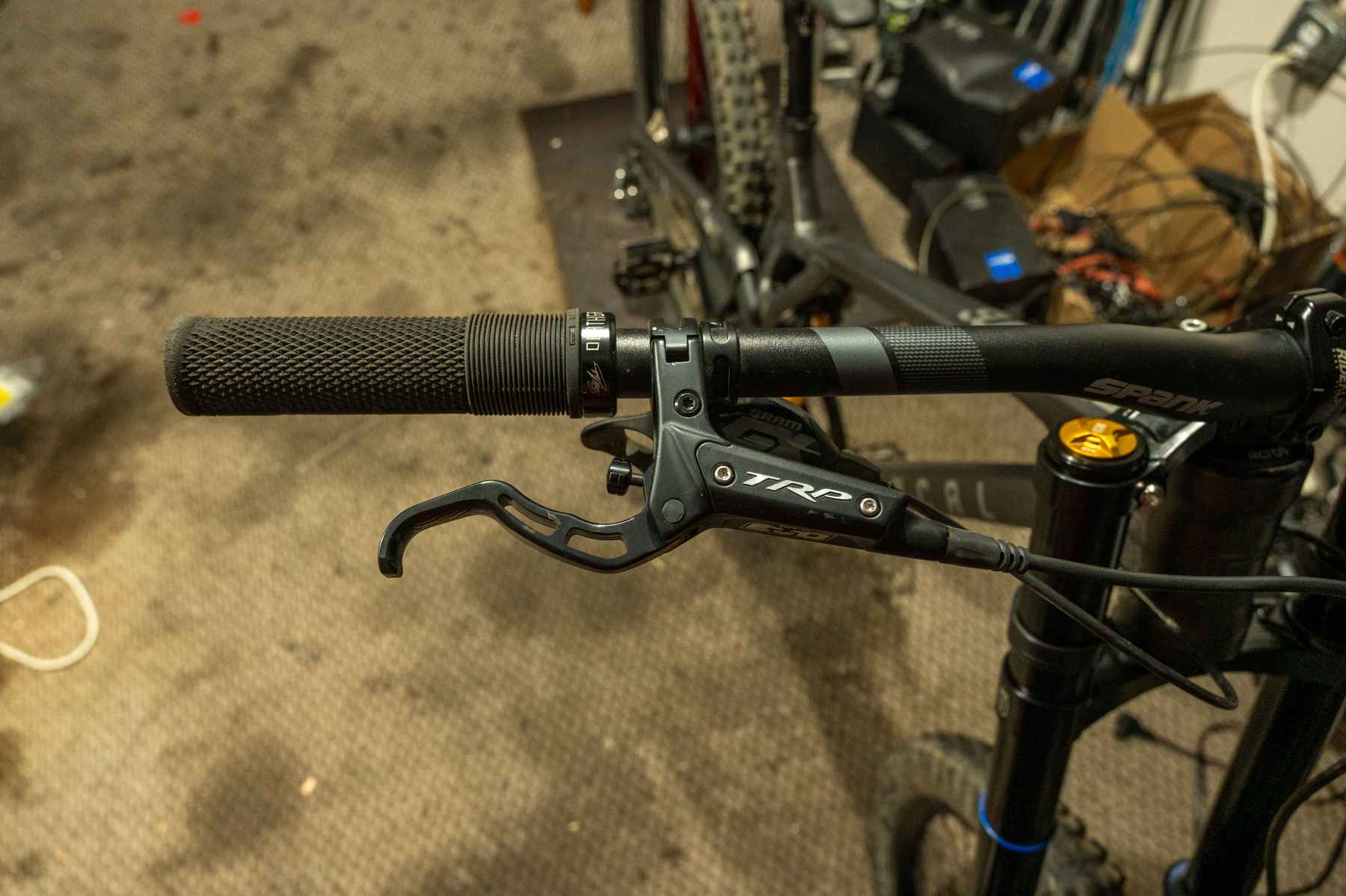
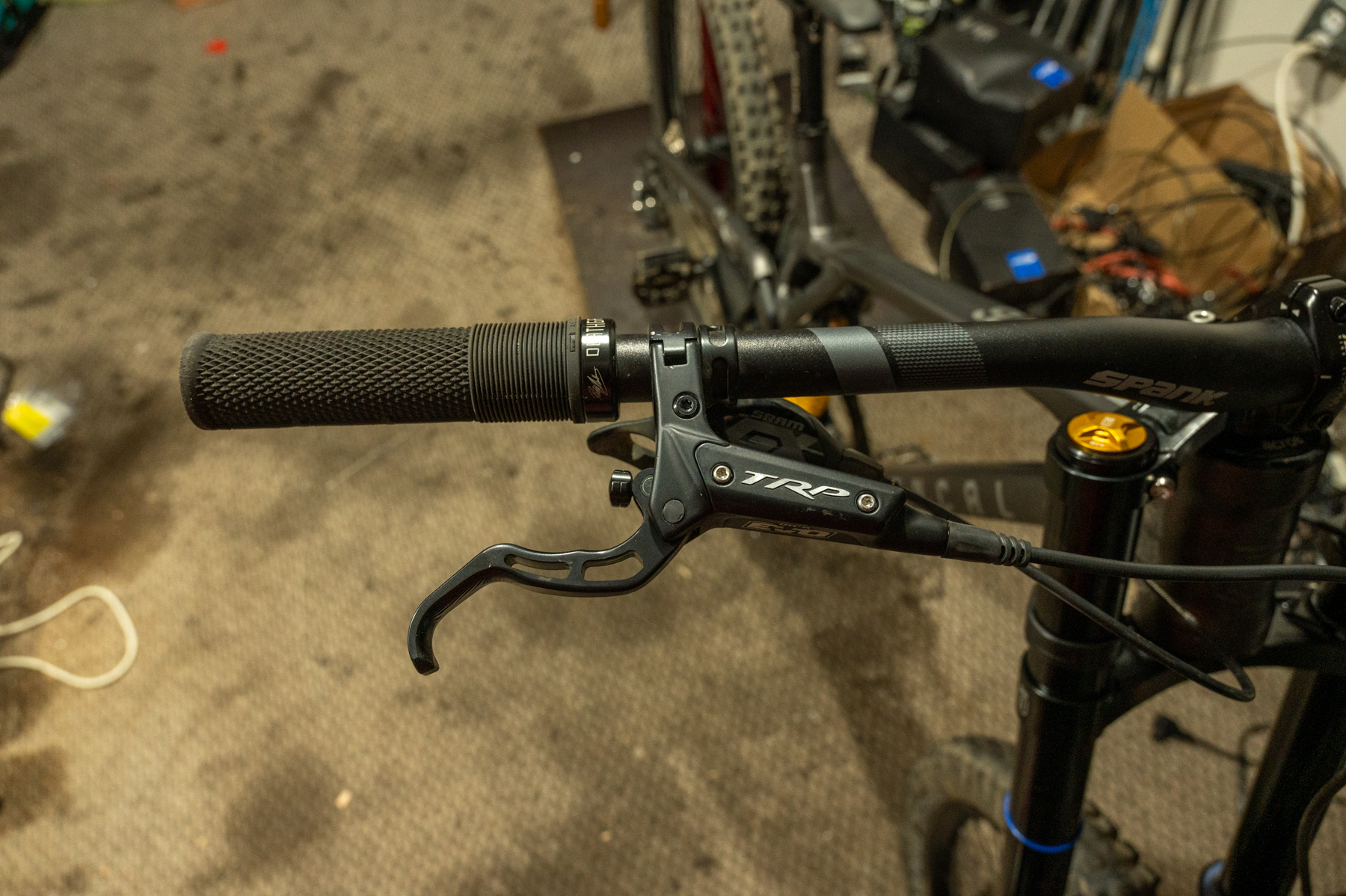
On the Trail
The Freedom Coast levers work just as advertised — they bring in the lever reach of TRP’s Evo-series brakes by about 12 mm while mostly feeling like the stock lever. They’re nicely made, feel quite solid, and fit well — just what I’d hoped for.
There are a couple of minor ways in which the Freedom Coast levers feel different from the stock TRP levers (besides, of course, the shorter reach), and they could be pros or cons, depending on your preferences.
The more obvious one is that the Freedom Coast levers feature a substantially deeper hook on the end of the lever blade. That provides a more secure-feeling hold on the lever, but also makes the positioning of the brake lever on the bar feel more critical. With the stock TRP lever blade, I can happily run the lever assembly slightly farther inboard than I can with the Freedom Coast one; consequently, I end up with my finger a tiny bit farther out toward the end of the stock lever setup. With the deeper hook on the Freedom Coast lever, I need to have my finger fractionally farther in on the lever blade to be comfortable, so I found myself moving the brakes a couple of millimeters farther outboard on the handlebar to compensate.
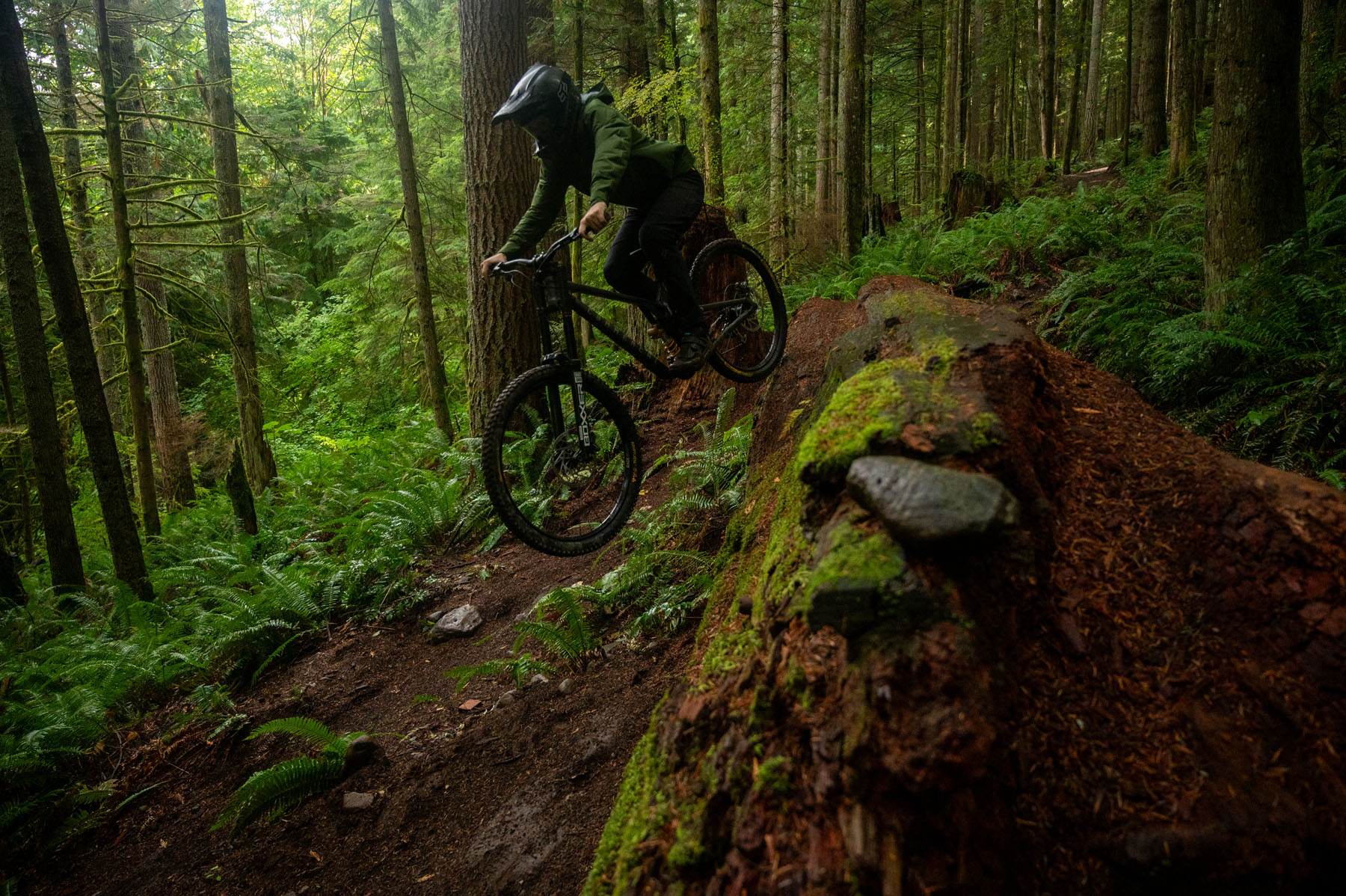
That wasn’t a problem for me, and once I moved the brakes outboard, the Freedom Coast blades felt great. If you’ve already got your lever clamps slammed against your grip (or your other controls, if you run them outboard of the brake levers) it might be more of an issue.
The other, more subtle change is that the Freedom Coast levers also make the bite point on the DH-R Evos feel a tiny bit firmer. Some of that might just be that the Freedom Coast levers are stiffer than the stock TRP versions, but I think the bigger reason has to do with the way that the reach-adjustment mechanism works on the DH-R Evos (and TRP’s other brakes).
Most modern higher-end brakes have a cam that sits between the lever blade and the master cylinder piston, with the lever blade pushing on the cam, and the cam in turn pushing the piston. Common examples include Shimano’s mid-to-high-end offerings, SRAM Codes and Mavens, Hayes Dominions, Hope Tech 4s, etc. The reach-adjustment mechanism on those sorts of brakes changes the relationship between the lever blade and the cam, and in doing so minimizes how much the reach adjustment changes the overall leverage of the brake, depending on where the reach adjuster is set.
TRP doesn’t use such a cam, so changing the reach adjustment also slightly changes the leverage curve of the brake lever. With the stock TRP lever blade, I run the reach adjuster all the way in, which produces a slightly softer bite point. With the Freedom Coast lever, my ideal position is with the adjuster wound back out slightly; this equates to a position somewhere between the minimum reach with the stock blade and the minimum setting on the Freedom Coast lever. That, in turn, also firms up the bite point a tiny bit.
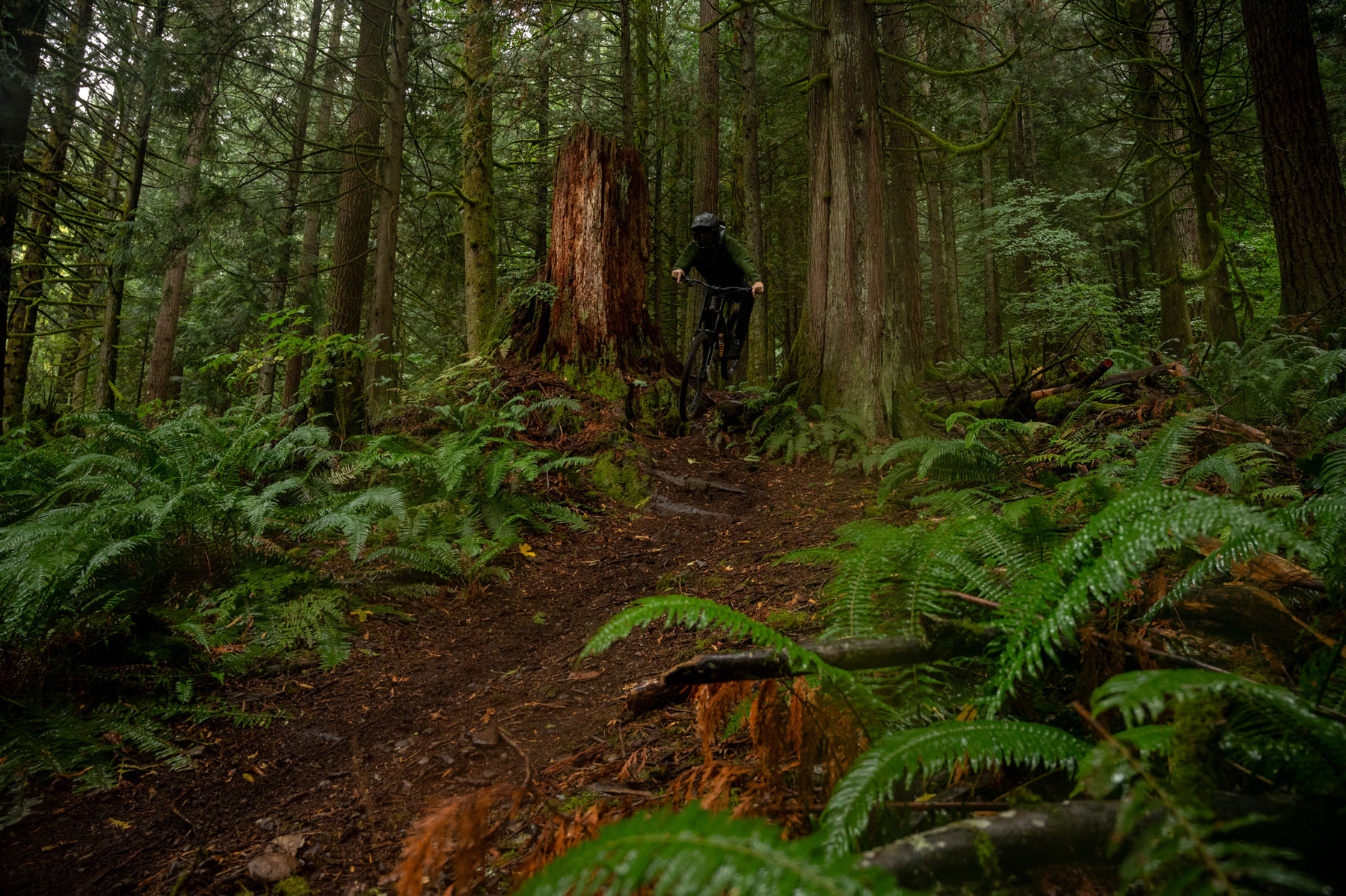
That change in leverage at the bite point theoretically should also lower the outright power of the brakes very slightly, but the difference is subtle enough that I can’t say that I really noticed — and it’s not like the change to the bite point is at all dramatic, either.
So, big picture, the Freedom Coast levers do exactly what they’re meant to — reduce the reach on TRP’s Evo-series brakes, without changing the rest of their feel or performance too much. And as someone who likes the DH-R Evos quite a bit, apart from their gratuitously long reach to the lever, that’s great.
Bottom Line
I like the TRP DH-R Evo brakes quite a bit, but their reach range is unusually far out from the handlebar, and the Freedom Coast lever blades are an effective fix for folks like me who do not get along with the stock setup. The Freedom Coast levers are well-made, feel great, and while it’d be nice if the stock brakes had a more useable reach adjustment range, I’m glad there’s now a good option to address it.

Nice review Mr. Golay! I chucked these Freedom Coast levers on my DHR-Evos and have a handful of rides on them. I was shocked to read that you moved the brake outboard on the bar. I felt the need to move them inboard…weird. I agree that the aggressive hook is a very noticeable feature. I really like that hook for when I’m doing hard breaking especially down very steep tracks.
I didn’t realize that adjusting the brake levers towards the bar changed the leverage ratio. I don’t need these levers for the reach but the lever feel is a lot better when they’re fully extended compared to my standard position close to the bars. I might have to get some for the improved lever feel alone.